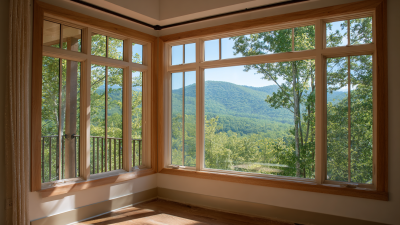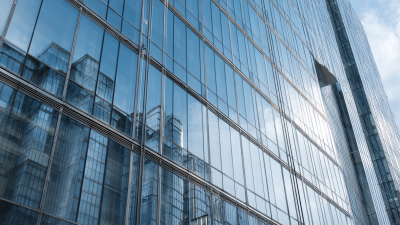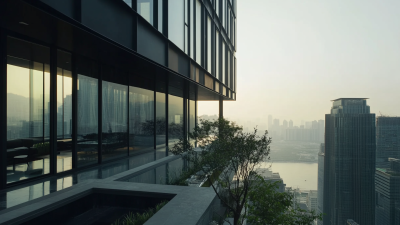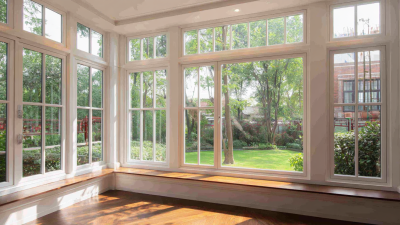Choosing the best metal clad windows for your home can significantly enhance both its aesthetic appeal and energy efficiency. According to a recent report by the Window & Door Manufacturers Association, metal clad windows can offer an impressive return on investment, with homeowners experiencing up to 73% of their remodeling costs recouped upon resale. These windows, which combine the durability of metal with the warmth of wood interiors, are increasingly popular due to their resistance to weathering and low maintenance needs. A study from the U.S. Department of Energy also highlights that energy-efficient windows can reduce heating and cooling costs by up to 25%. Therefore, understanding the features, benefits, and potential drawbacks of metal clad windows is crucial for homeowners seeking to make an informed decision that balances performance, style, and financial investment.

Metal clad windows offer a unique blend of durability and aesthetics, making them an excellent choice for homeowners seeking long-lasting solutions. The outer layer, typically made of aluminum or fiberglass, significantly enhances structural integrity while resisting the elements, which is particularly beneficial for homes in harsh climates. This robust exterior protects against moisture, rot, and pests, ensuring that the windows maintain their beauty and function over time.
In addition to their durability, metal clad windows provide a high degree of insulation and energy efficiency. The interior wood frame offers natural warmth and a classic look, while the metal exterior ensures minimal maintenance and improved energy performance. Homeowners can enjoy reduced energy costs and increased comfort without sacrificing style. These windows are available in various finishes and colors, allowing you to customize your home’s appearance while enjoying the practical benefits of modern window technology. The combination of beauty, resilience, and efficiency makes metal clad windows a smart investment for any homeowner looking to enhance their property.
When selecting metal clad windows for your home, the design options and aesthetic appeal play a crucial role in ensuring the final choice complements your property’s overall style. Metal clad windows are available in various designs, including traditional, contemporary, and modern styles, allowing homeowners to match them with their existing architecture. Consider the exterior finishes, such as wood or aluminum cladding, which can significantly impact the visual appeal. The right combination of materials can enhance your home’s façade while providing durability against elements.
In addition to design, color selection is vital in creating the desired aesthetic. Many manufacturers offer a broad palette of colors for the exterior cladding, allowing you to harmonize the windows with your home’s exterior. A well-chosen color can highlight architectural features and contribute to a cohesive look. Furthermore, it’s essential to consider the window grids and hardware finishes, as these details can elevate the overall design. By carefully evaluating these aspects, you can ensure that the metal clad windows not only meet functional needs but also enhance the beauty and character of your home.
| Design Option | Material Type | Energy Efficiency | Price Range | Aesthetic Appeal |
|---|---|---|---|---|
| Casement Windows | Aluminum Clad | High | $300 - $600 | Modern look |
| Double-Hung Windows | Vinyl Clad | Moderate | $200 - $400 | Traditional style |
| Sliding Windows | Wood Clad | High | $400 - $800 | Elegant appearance |
| Picture Windows | Fiberglass Clad | Very High | $500 - $1000 | Sleek and contemporary |
When selecting metal clad windows for your home, understanding energy efficiency ratings is crucial. These ratings measure a window's ability to insulate against temperature variations, which can significantly impact your energy bills. According to the U.S. Department of Energy, windows account for 25% to 30% of residential heating and cooling energy use. Therefore, investing in high-performance metal clad windows can result in substantial energy savings over time.

Look for windows that comply with the National Fenestration Rating Council (NFRC) certifications. This organization provides reliable ratings on parameters such as U-factor, Solar Heat Gain Coefficient (SHGC), and Visible Transmittance (VT). A lower U-factor indicates better insulation, while an optimal SHGC can help manage heat gain from sunlight. The Environmental Protection Agency’s ENERGY STAR program suggests that homeowners choose windows with ENERGY STAR certification, which ensures higher efficiency. In regions with extreme climates, selecting windows that meet or exceed these criteria can drastically improve your home's comfort and reduce energy consumption by up to 12%, as highlighted in a study by the Lawrence Berkeley National Laboratory.
When selecting metal clad windows for your home, it’s crucial to consider their maintenance requirements and longevity. Metal clad windows, combining the durability of metal with the aesthetic appeal of wood, typically require less upkeep than all-wood windows. According to the American Architectural Manufacturers Association (AAMA), metal clad windows can last 30 years or more with proper maintenance, making them a wise investment for homeowners. Regularly inspecting the exterior for signs of wear and promptly addressing issues can significantly extend their lifespan.
**Tips:** To maintain your metal clad windows, clean the frames regularly with mild soapy water and avoid abrasive cleaners that can damage the finish. Additionally, consider reapplying paint or sealants every few years to protect against corrosion, especially in harsh climates.
Furthermore, the longevity of these windows can be influenced by the type of metal used. Aluminum cladding is often recommended for its resistance to rust, while fiberglass-clad options provide great thermal insulation. A report by the National Association of Home Builders (NAHB) indicates that well-maintained metal clad windows not only outperform traditional wood frames but can also save homeowners up to 15% on energy bills due to better insulation properties.
**Tips:** Invest in high-quality metal clad windows with a good warranty and be proactive about scheduling annual inspections to ensure optimal performance over time.
This chart illustrates the maintenance frequency and expected longevity of different metal clad window types based on user feedback.
When considering metal clad windows, cost factors play a crucial role in budgeting for their installation. According to the Window & Door Manufacturers Association (WDMA), the average cost of installing metal clad windows ranges from $600 to $1,200 per window, depending on size, style, and manufacturer. This price typically includes both the window unit and labor costs, although customization and additional features can significantly increase expenses. It’s essential for homeowners to understand that while initial costs might be higher, the long-term energy savings can offset these expenses. Energy Star-rated metal clad windows can save homeowners an average of 12-15% on their energy bills annually, which can lead to substantial savings over time.

Moreover, when budgeting for installation, it's vital to consider the potential for additional expenses. Installation permits, removal of old windows, and sealing or finishing work can all add to the total cost. A survey by the National Association of Home Builders (NAHB) indicates that labor costs for window installation have seen a rise, making it important to secure multiple quotes from licensed contractors for an accurate comparison. Investing in metal clad windows not only ensures durability and aesthetic appeal but also demands careful financial planning to maximize the benefits of this long-lasting choice.










